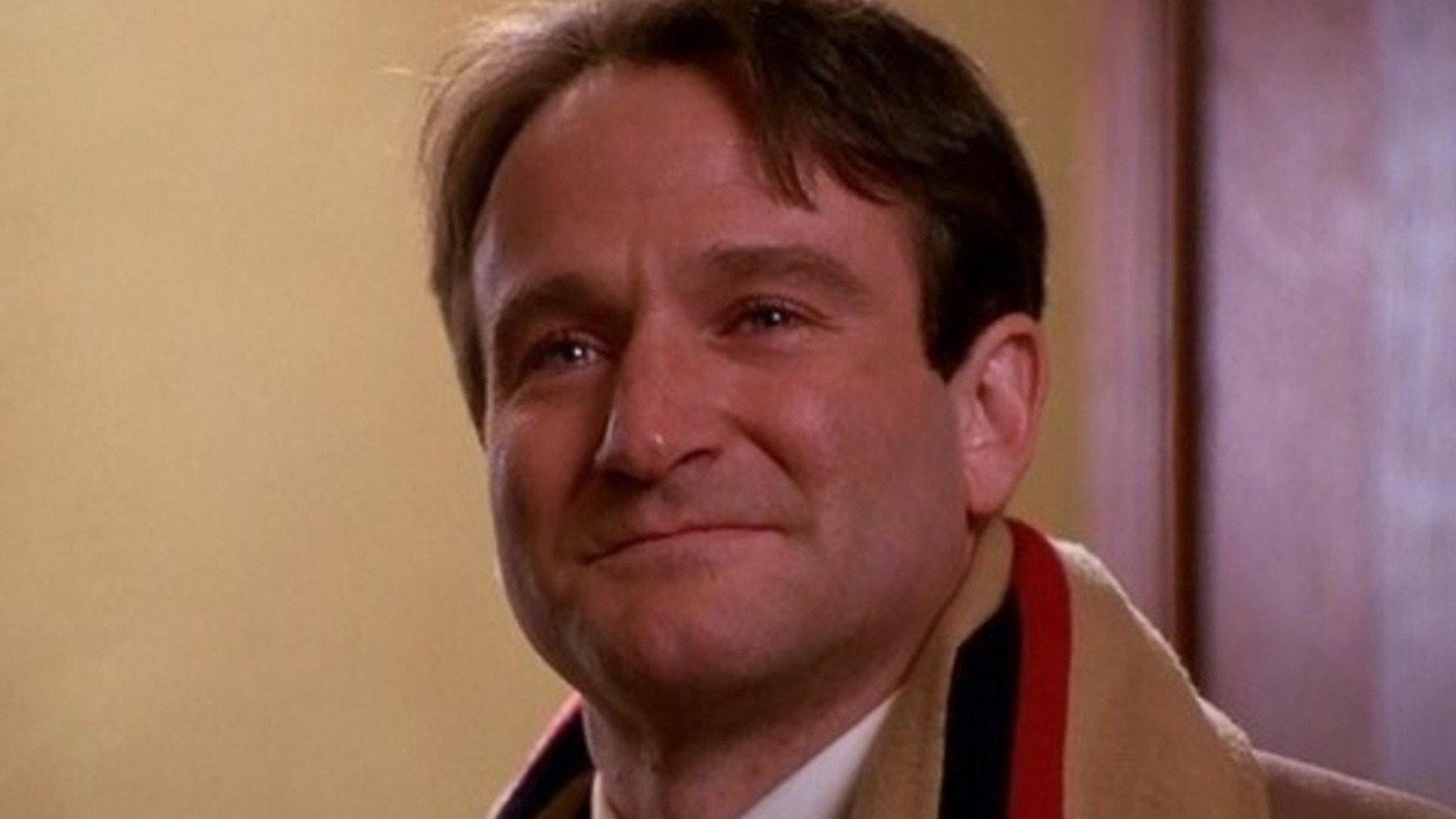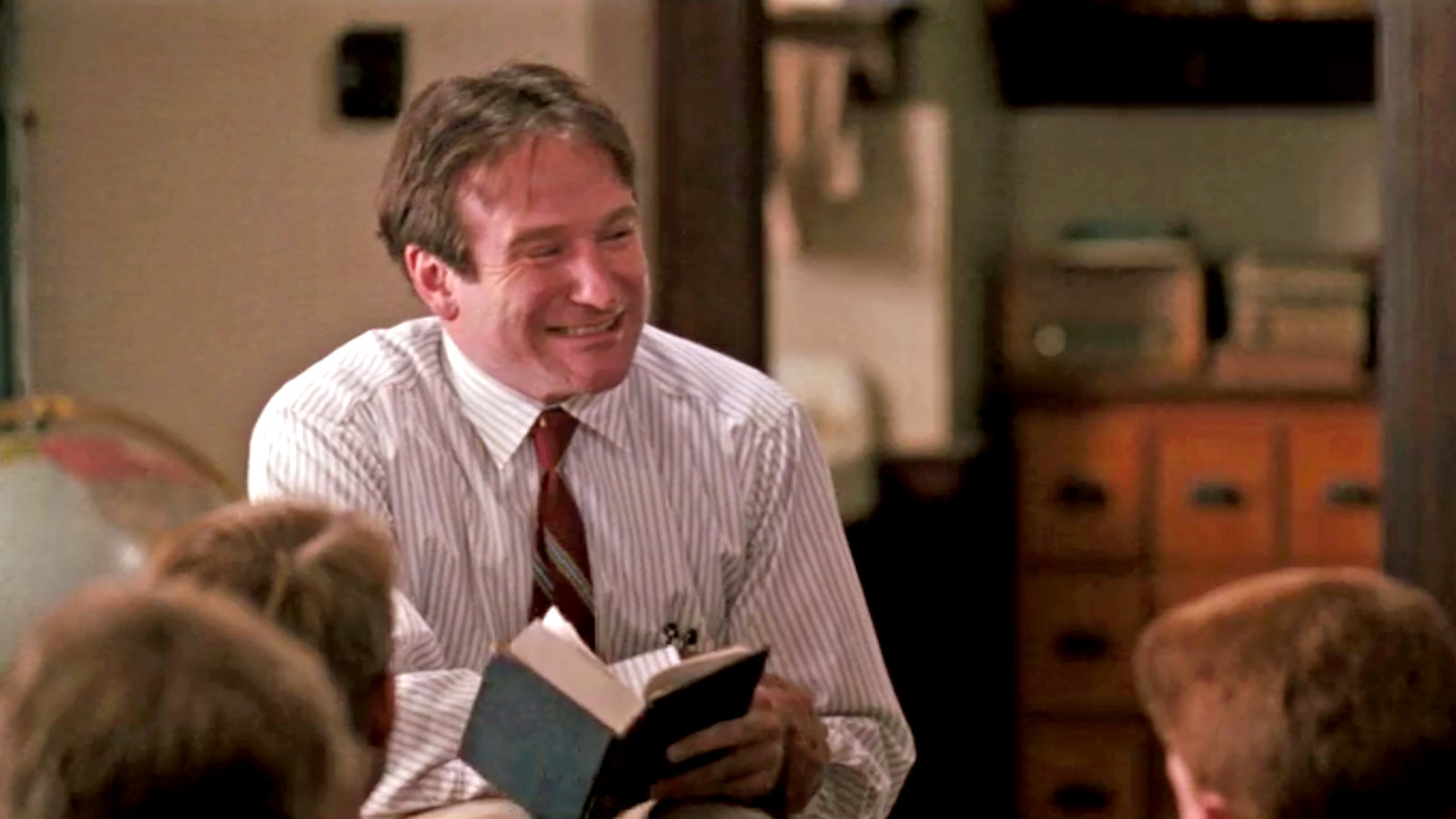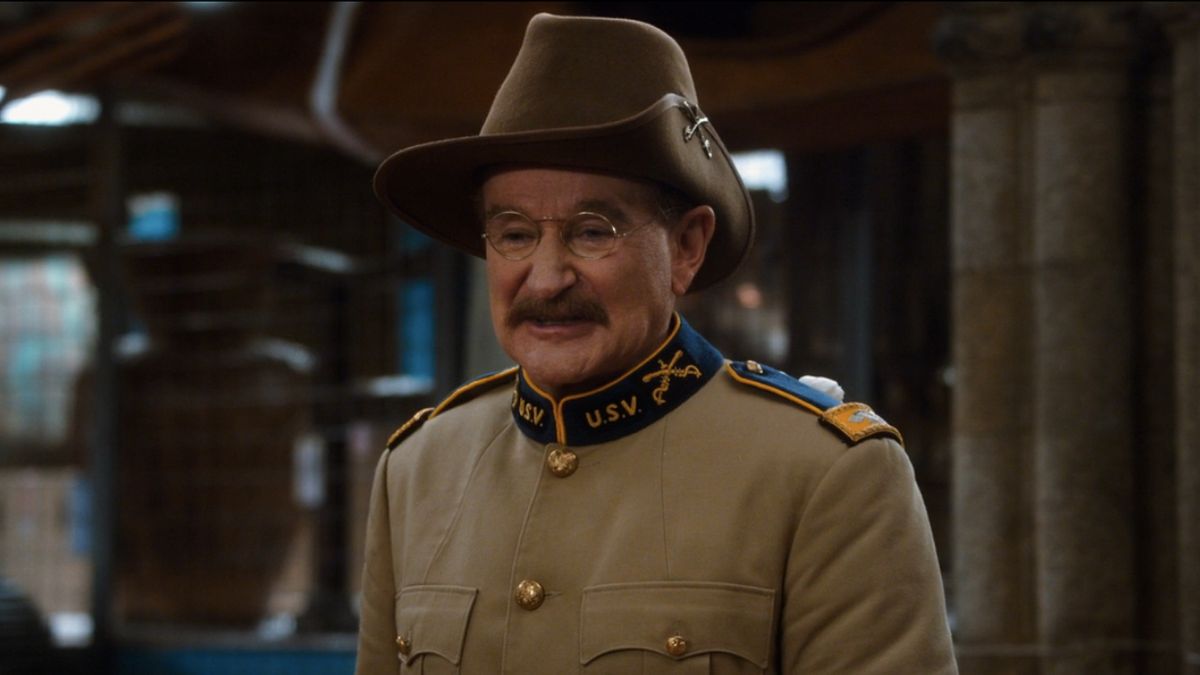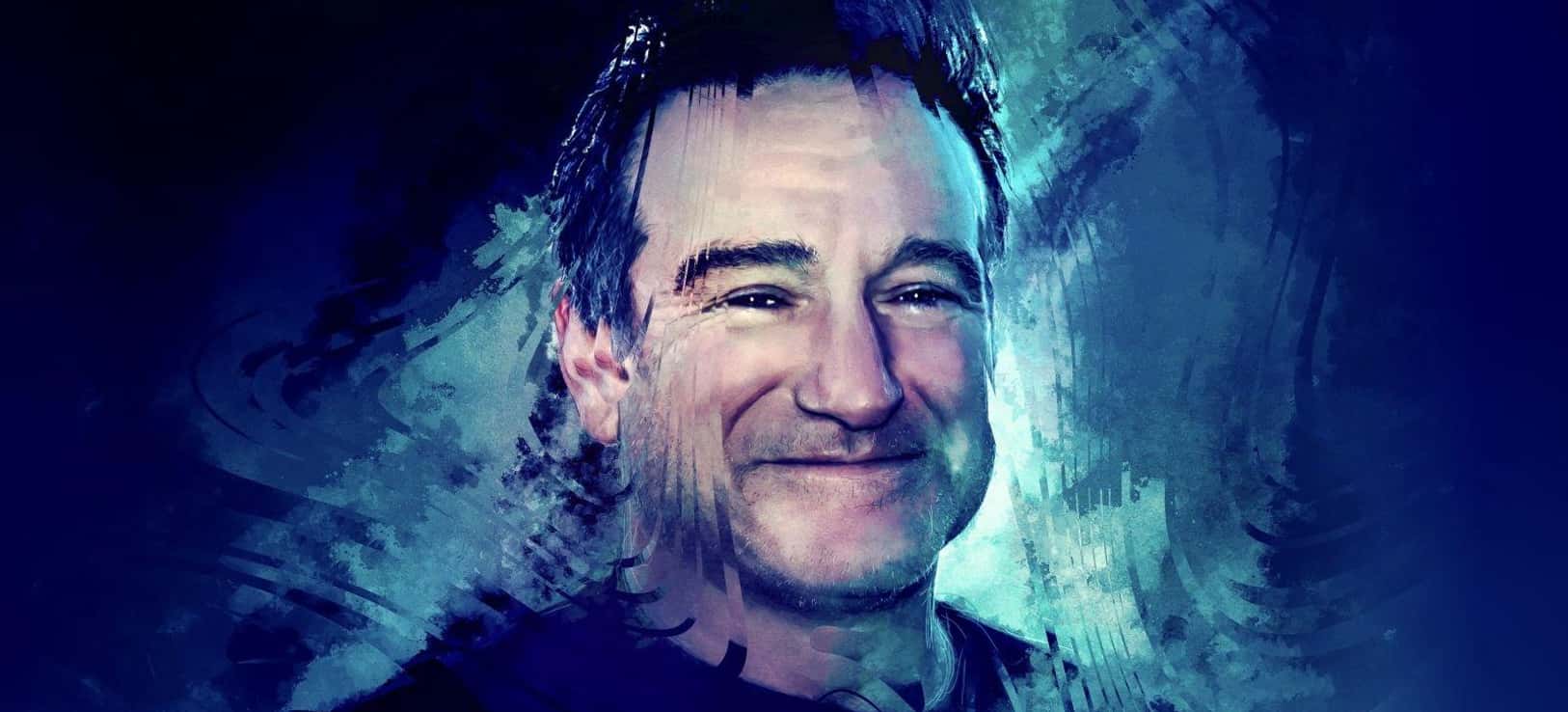Robin Williams was a legendary man of comedy, charisma, and unbridled talent that graced the television and movie screens of many folks for decades. Whether he was making you laugh in Mrs. Doubtfire (1993) and Aladdin (1992), making you cry in Dead Poets Society (1989) and Good Will Hunting (1997), or simply entertaining you endlessly in Jumanji (1995) and Hook (1991) — Williams was a powerhouse that entered the hearts of millions throughout his decade-spanning career. It was in August 2014, however, that the world learned the devastating news that the beloved entertainer had taken his own life. In the wake of the heartbreak, people across the world had little to no knowledge on what may have caused such a tragic outcome. Tylor Norwood’s 2020 documentary, Robin’s Wish, delves into the dark details of Williams’s final years and sheds light on facts that many fans may have never known.
The National Suicide Prevention Lifeline is a 24/7 hotline available for you, or anyone you know, who may be experiencing a crisis and in need of help. Call or text 988 to speak with a certified listener.
1. It Wasn’t Until After He Passed, That People Learned Williams Was Suffering From The Rare Brain Disease Lewy Body Dementia (LBD)

Photo: Vertical Entertainment
Robin Williams took his own life in August 2014. In October of that year, his widow, Susan Schneider Williams, saw the coroner’s report, which found that the actor had suffered from diffuse Lewy body dementia (LBD), a fatal disease that destroys neurons in the brain and causes such symptoms as paranoia, anxiety, and disruption of sleep patterns. According to the Lewy Body Dementia Association, LBD is “the second most common type of progressive dementia after Alzheimer’s disease.”
When she learned of the diagnosis, Susan Williams says in the documentary Robin’s Wish, “I remember feeling, ‘Now I have a name for it.’ It was the beginning of understanding what had really gone on.”
Although some in the media had speculated that the actor’s suicide was related to controlled substances, the toxicology report came back clean. That was no surprise to his widow, who was sure the actor had been clean and sober at the time of his passing. Instead, she attributes his behavior to the fact that “he wasn’t in his right mind. Those Lewy bodies were in nearly every region of his brain.”
Williams never received a diagnosis of LBD during his lifetime, even though he visited numerous doctors in an attempt to find answers for his deteriorating condition for more than a year before he passed. His wife believes that if he had received an accurate diagnosis, the actor would have at least been able to find some peace.
2. Robin’s Form Of LBD Was One Of The Most “Devastating,” According To A Doctor

Photo: Vertical Entertainment
After Susan Schneider Williams was told her husband had suffered from LBD, she asked Bruce Miller, MD, a neurologist and director of the Memory and Aging Center at UC San Francisco, to examine the last two years of Robin Williams’s medical records. Miller says in the documentary:
I realized this was about as devastating a form of Lewy body dementia that I’d ever seen. Almost no part [of Williams’s brain] was left unaffected. It really amazed me that Robin could walk or move at all.
Miller explains that because Williams had never received a diagnosis, he had no idea what was causing his symptoms, which might have led to his despair: “[LBD] becomes progressively irreversible, unstoppable. And always fatal, always fatal. It affects many people, and sadly, one of the outcomes is suicide.”
3. Increased Delusions, Memory Loss, Paranoia, And Anxiety Were Results From LBD That Williams Had To Endure

Photo: Vertical Entertainment
According to neurologist Bruce Miller, LBD increases anxiety and self-doubt and causes delusions and misbeliefs.
Robin Williams also suffered from the inability to retain information. One night Williams called his wife from Vancouver, where he was filming the third Night at the Museum film. According to Susan Williams, the actor panicked because he was having so much trouble trying to remember his lines.
He also dealt with paranoia. By July 2014, “the degree to which the paranoia came in was so drastic. He was just going from room to room, watching me,” Susan Williams says in Robin’s Wish. “He was making a lot of phone calls and texting people. And questioning, I’m sure, questioning my loyalty to him.”
When he snapped out of his paranoid episodes, he’d be very upset with himself. “He had this awareness of what he was doing and it pained him, ” Susan Williams says, “because he knew it wasn’t us. It wasn’t right.”
In the documentary, Walter Koroshetz, MD, director of the National Institute of Neurological Disorders and Stroke, says many people don’t understand diseases like LBD:
[With LBD], it’s brain circuits that cause troubles that people assume are behavioral, not potentially related to a disease. [If] someone has Parkinson’s disease and they have shaking and can’t walk, then, oh, that’s clearly a disease. But in fact, it’s pure semantics. There’s no difference. It’s just different [brain] circuits that are being affected.
Miller agrees, explaining, “There’s not a realization that the chemical changes in the brain are responsible for the psychiatric changes.”
4. After A Therapist’s Suggestion For Robin And His Wife To Sleep Separately To Help His Sleeping Issues, Robin Became Concerned How It Might Affect The Marriage

Photo: Touchstone Pictures
In Robin’s Wish, neurologist Bruce Miller says LBD also affects sleep: “When [LBD sufferers] are asleep, they suddenly act out their dreams. We call it REM behavior. They can strike out during a dream and actually hit people.”
Susan Williams says her husband’s lack of sleep had been building intensely since December 2013. Neither the actor nor his wife could get any rest because of Williams’s delusional looping, which tended to be worse at night.
In July 2014, Williams’s therapists suggested that the couple start sleeping separately, in an attempt to help the actor get more rest. His response to the suggestion was heartbreaking: “He came to me and asked, ‘Does this mean we’re separated?'” Susan Williams recalls.
5. Coworkers On The ‘Night At The Museum’ Movie Set Later Admitted To Noticing Struggles In Williams, But Remained Silent At The Time

Photo: Vertical Entertainment
Production on Night at the Museum: Secret of the Tomb, the third film in the Night at the Museum series, ran from January to May 2014. In Robin’s Wish, Shawn Levy, who directed all three of the films, admits that it quickly became clear something was not right with Robin Williams, who played Teddy Roosevelt in the series:
I would say a month into the shoot it was clear to me, it was clear to all of us on that set that something was going on with Robin. We saw that Robin was struggling in a way that he hadn’t before to remember lines, and to combine the right words with the performance.
But the director says he was determined to keep quiet about the actor’s issues: “I felt like I was somehow being loyal to him by not speaking about the struggles that we saw. I think we felt like that wasn’t anyone’s business.”
In Robin’s Wish, Levy says that although he is proud no one involved in the film spoke about Williams’s struggles, now that people know about his LBD, “it no longer feels loyal to be silent about it, but maybe more loyal to share, without shame, without secrecy, that yeah, this guy was hurting, he was going through something that he didn’t have a name for yet.”
6. When Williams Starred In CBS TV’s The Crazy Ones, An Executive Producer Noticed Something About Robin’s Arm

Photo: Vertical Entertainment
At the same time he was filming the third Night at the Museum film, Robin Williams was starring in CBS TV’s The Crazy Ones. The cast and crew of the sitcom, like those who worked on Night at the Museum, realized something was not right with the actor.
David E. Kelley, creator of the show, says in Robin’s Wish, “We knew he was getting tested; he was feeling infirm or not himself and he was getting tested.”
Executive producer John R. Montgomery says he noticed something seemed to be wrong with Williams’s arm:
I’d frequently see him clutching his hand close to his chest a little bit. Or he’d put it in his pocket and kind of mask certain things. We knew he was fragile, and the deal was sometimes we’d have to let Robin be alone, take a minute, catch his breath, particularly at the end of shooting.
7. Williams Would Call A Night At The Museum Director And The Crazy Ones Creator To Express Anxious Thoughts Late At Night

Photo: Vertical Entertainment
During production of the third Night at the Museum film, according to director Shawn Levy in Robin’s Wish, Robin Williams called him late at night or in the early morning to ask if any of his scenes were usable. Levy says he tried to reassure the actor that “you are still you.” But he also saw Williams’s frustration:
I remember him saying to me, “I’m not me anymore. I don’t know what’s going on.” His mind was not firing at the same speed. That spark was diminished. The joy was sometimes not there.
David E. Kelley says that on the set of The Crazy Ones, he could tell the actor was anxious about his work:
We had a room for him where he could go between takes, and I went into that room and we talked a little bit about the scene, and he asked a few times… “Is it working?” But the subtext of it was, “How am I doing; am I working?” His sense of security and confidence in who he was… there was something eroding within him.
Still, Kelley says, “If the studio or the network came begging for more interviews or more publicity, he would always give it his all.”
8. On His Final Night, Robin Told A Neighbor That He “Really Needs A Hug” And Proceeded To Cry On The Neighbor’s Shoulder

Photo: Vertical Entertainment
Jon Hepper was a neighbor of Robin and Susan Williams. In the documentary, Hepper says that at around 9:30 pm on August 10, 2014, his wife told him she saw the actor standing with his dog outside their house. Hepper went out to ask Williams if he was okay. The actor said yes, followed by, “Boss, I really need a hug.”
Hepper obliged, and the actor started to cry. Worried, Hepper asked his friend if there was anything he could do for him, if he was in pain, or if anything was wrong. Williams’s response: “No, boss.”
The actor then started talking to his friend about things going on in his life. Hepper believes the actor confided in him because he knew his friend would keep the conversation quiet. After about 15 minutes, Williams said, “Bye, boss.”
“I’ll see you in the morning,” Hepper replied, and watched as Williams walked back to his own home. It was the last time he saw the actor alive.
9. Robin Williams Once Said “I Just Want To Reboot My Brain” To His Wife, As His Condition Worsened And Doctors Were Unable To Provide Him Many Answers

Photo: Vertical Entertainment
By May 2014, Robin and Susan Williams had been searching for answers about Williams’s deteriorating condition for more than a year. Susan Williams says the actor was tormented about the lack of answers they received from various doctors.
One night in May, they went to a party for their good friend Mort Sahl. After they returned home, Susan Williams says, the actor became very anxious about whether Sahl would make it through the night. He texted Sahl several times, and when he received no reply, wanted to drive to the comedian’s home to make sure he was okay.
When Robin came out of this particular delusion, Susan says, he told her, “I just want to reboot my brain.”
10. When Robin And Susan First Met, They Actually Bonded And Connected Over Their Similar Familiarity With 12-Step Programs
Graphic designer Susan Schneider became Robin Williams’s third wife in October 2011. The couple met at an Apple store; Susan decided to speak to the actor after she saw him looking at her.
Like Robin, Susan had substance problems in the past, so they connected over their familiarity with 12-step programs, and before long started dating.
“We just had a theme, a way of approaching life that was so in sync,” Susan says in Robin’s Wish. “We were just like two little kids. We were looking at the world together. Almost like through each other’s eyes.”
11. Riding His Bicycle Was A Form Of “Meditation” To The Entertainer

Photo: Touchstone Pictures
Robin Williams was shaken when John Belushi perished from an overdose in 1983. According to Williams’s friend Stanley Wilson, after Belushi’s passing, Williams gave up all substances other than white wine.
Around this same time, Williams seriously took up cycling. The actor called bicycle riding his meditation because it was a way for him to get out of his own head.
12. Both Robin And His Wife, Susan, Were Heavily Active In Their Town’s Community And Local Theater

Photo: 20th Century Studios
Robin Williams and his wife were very active in their community, and the comedian performed regularly at the Throckmorton Theatre in Mill Valley, CA, including at open mic nights.
About two years before he perished, Susan Williams says in Robin’s Wish, she noticed her husband seemed less eager to go to the Throckmorton, meet people backstage, or hang out in the green room with other performers: “That confidence… he had in that ability to go on and play, he just wasn’t as willing to go there as much.”
13. Williams Once Told A Reporter How Much He Wanted To Live With Others And “Wouldn’t Do Well” In A Gated Community
Robin Williams and his wife lived in a small community in Marin County, just north of San Francisco. The actor had grown up in the area and wanted to live around regular people, not celebrities. In fact, he once told an interviewer that he “wouldn’t do well” if he lived in a gated community in Hollywood.
The actor and his wife were close friends with several of their neighbors, who say in Robin’s Wish that Williams didn’t act like a superstar.
14. This Quote That Robin Wrote On The Inside Of His AA Book Is What Inspired The Title For This Documentary

Photo: Vertical Entertainment
Robin Williams had dealt with substance use problems in his life and had gone through 12-step programs. Next to his bed was the book Twelve Steps and Twelve Traditions, which explains the 24 basic principles of Alcoholics Anonymous. On a page inside the book was this statement in Williams’s handwriting, dated July 31, 2012: “I want to help people be less afraid.”
Susan Wiliams recalls how Robin had talked about this specific hope when the couple discussed what they wanted to leave as their legacy.
The actor made several trips overseas to entertain the troops and often spent time with hurt soldiers, listening to them express their fears and sharing some of his own.
Williams’s statement inspired the title of the documentary Robin’s Wish.

